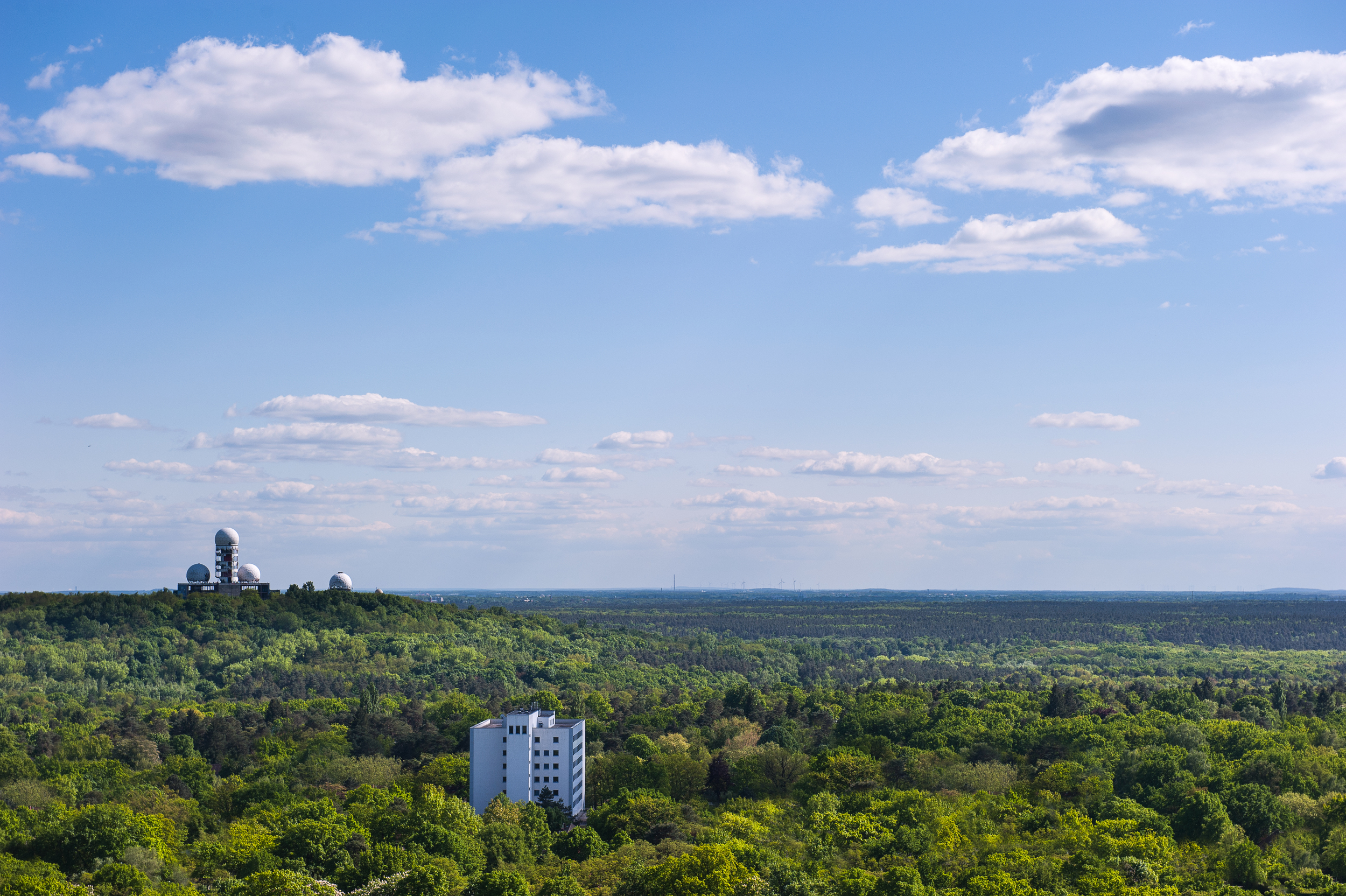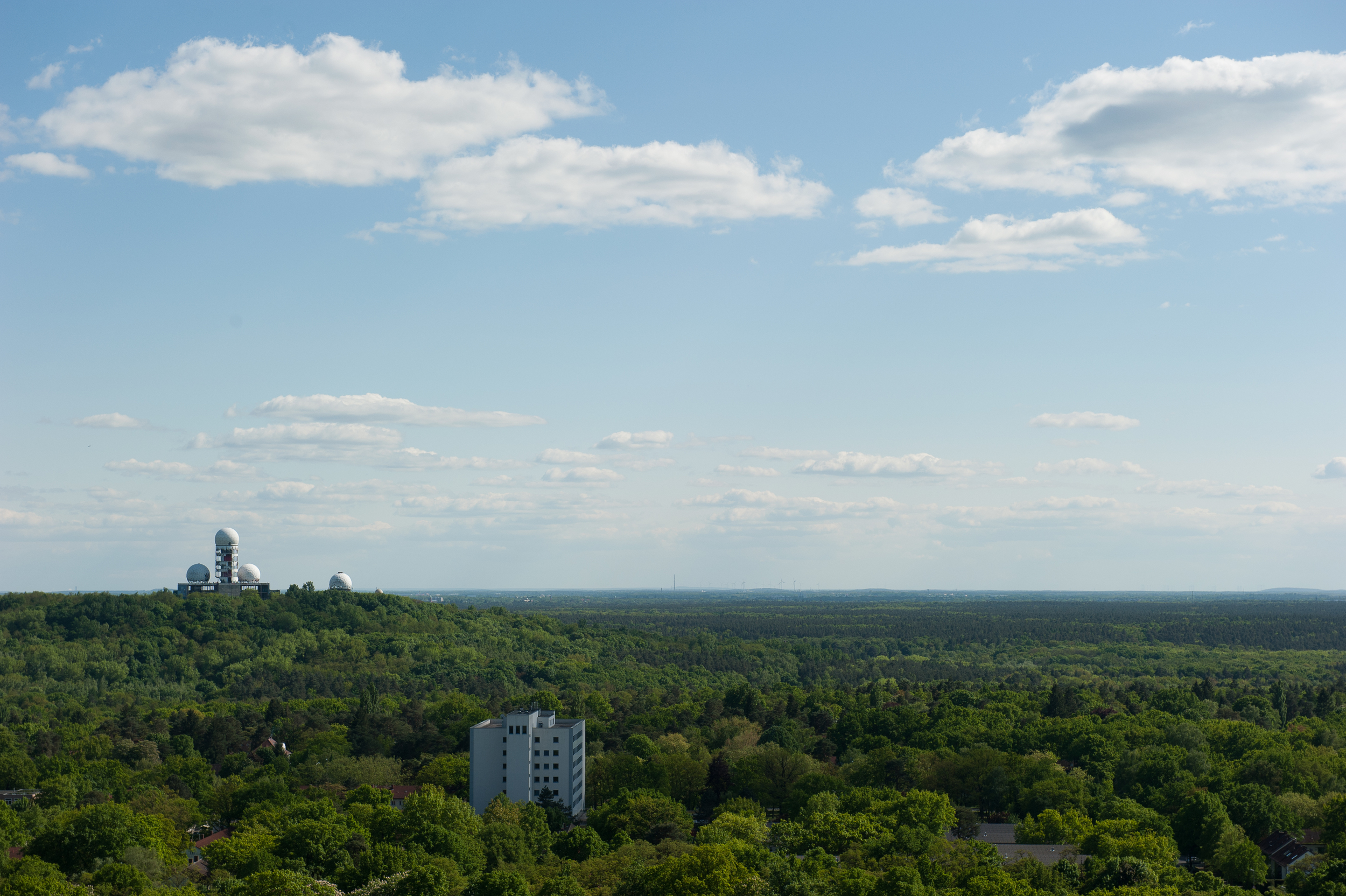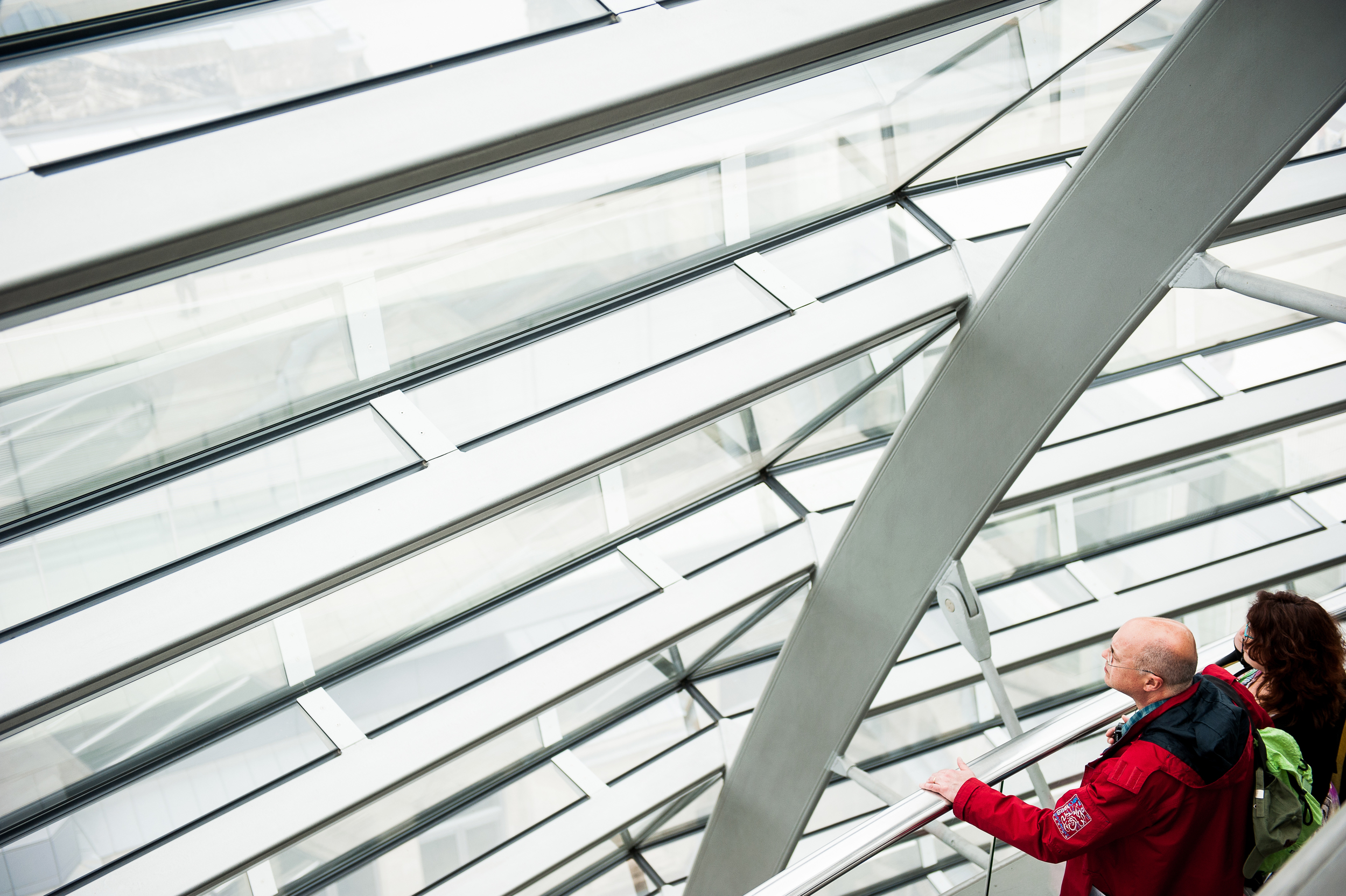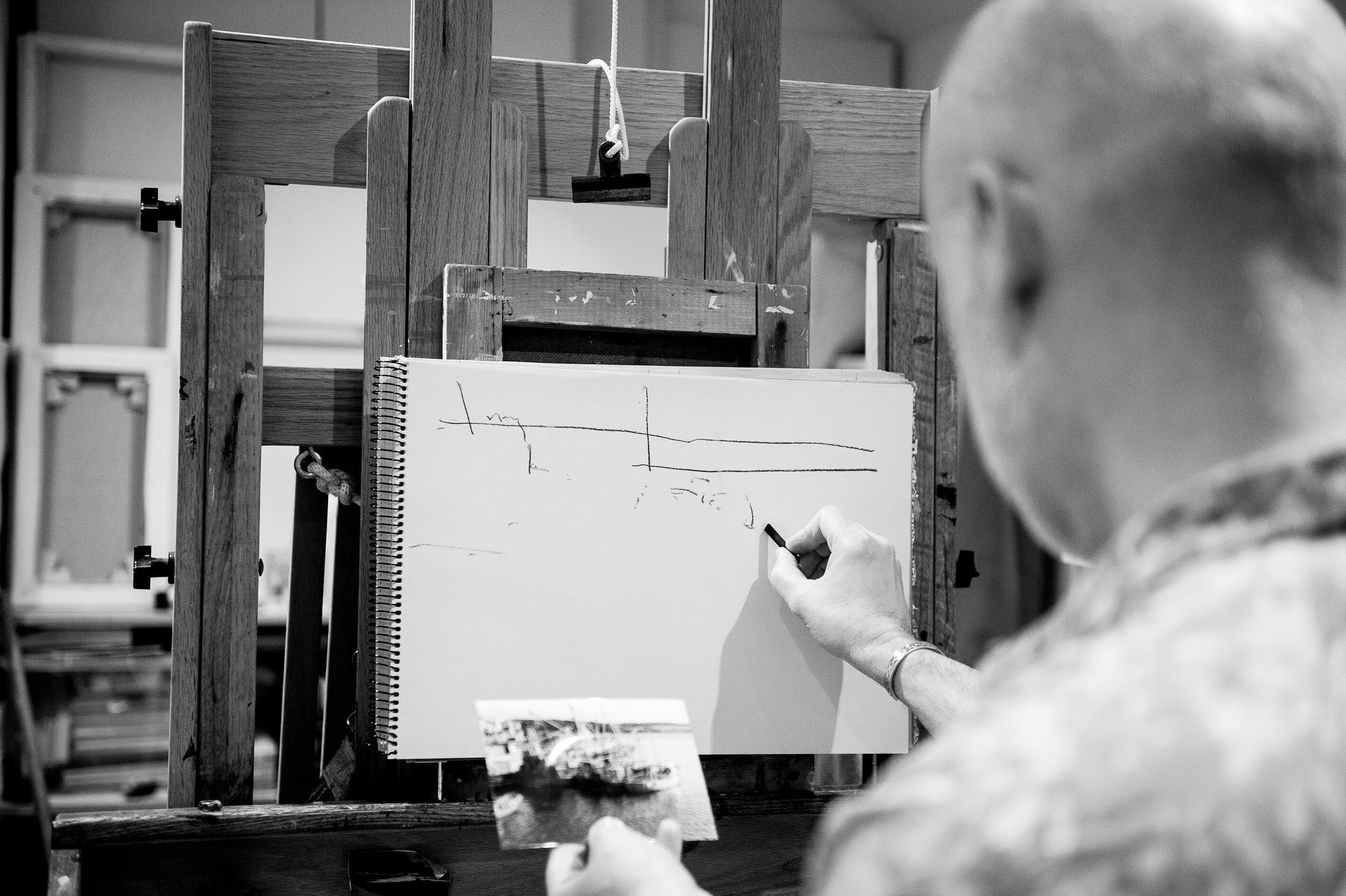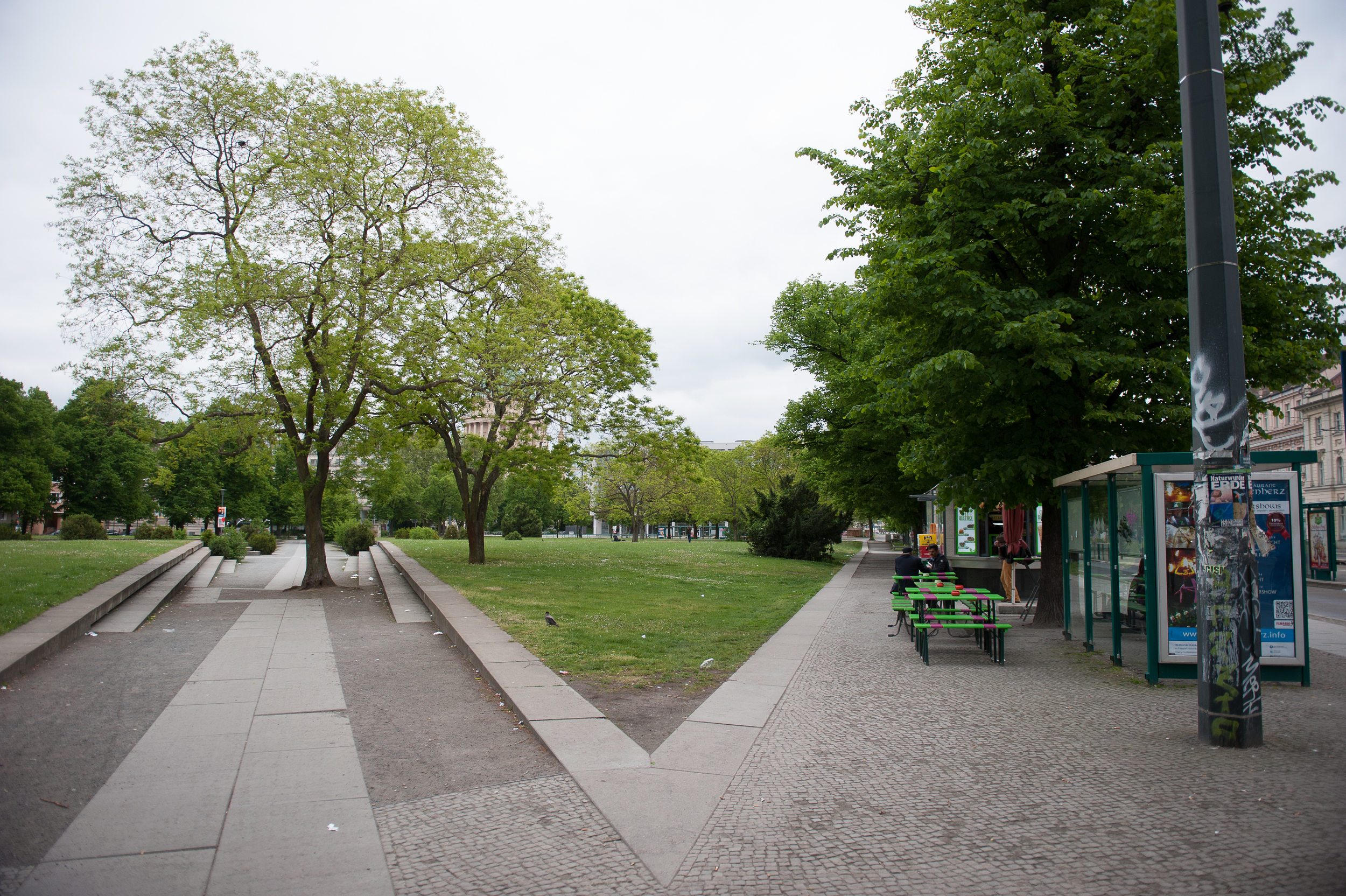The idea behind this assignment was to incorporate what we have learned on this part of the course into a set of photographs directed towards one type of subject. The brief was to produce 10 –15 photographs, all of a similar subject, which between them will show the following effects: •Single point dominating the composition •Two points •Several points in a deliberate shape •A combination of vertical and horizontal lines •Diagonals •Curves •Distinct, even if irregular, shapes •At least two kinds of implied triangle •Rhythm •Pattern.
I had a couple of false starts on this assignment. The first subject I attempted was flowers and I then moved on to street details but I was really unhappy with the resulting photographs. Although they showed the compositional concepts, they were far from interesting viewing. I had the opportunity to visit Berlin at the start of May and I felt that this trip would yield better shots for the assignment. (NB: clicking on any of the photographs in this post will take you to the full resolution image)
Single Point
The single point in the image is the couple seated in the empty stadium. The composition is edging more to the "Eccentric" as I have placed them well away from the centre of the photograph but the colour of the lady's hand bag and the man's jeans help isolate them against them the sea of grey seats. The couple are also highlighted by the pool of sunlight and the central curved shadow points directly to them. I did experiment with cropping the photograph so that only the seats and the couple were visible but this lessened the sense of scale and space of the stadium.
Multiple points
This wide angle landscape has 2 points as its subject. the first being the office building or apartment block in the foreground isolated against the trees, and the second being the abandoned industrial complex on the horizon. This Image has been digitally manipulated to increase the colour vibrancy and saturation, and also remove some smaller buildings. The composition remains "as shot" as can be seen from the original below.
Several Points in a Deliberate Shape
This shot of an art installation by the music video directing duo "Alexandliane" at the Olympus Photography Playground in Berlin shows multiple points (ie wigs on sticks) which when viewed at a certain angle become the shape of a heart ( the individual points out of context can be seen here).
A Combination of Vertical and Horizontal Lines
This shot could be considered to be a combination of horizontal, vertical and diagonal lines. These steel poles are part of a memorial to the wall which separated East and West Berlin from 1961 to 1989. The horizontal lines are created by the shadows of the poles and the diagonals obviously are the effect of perspective.
Diagonals
This first shot reminds me of the cheesy world cruise brochures with a couple who are looking out at the sea from whichever luxury deck they happened to be standing on at the time, the diagonal lines of the windows representing the waves. This context is imposed by the people in the corner of the photograph, if you take a piece of paper and cover the people and the hand rail, then the photograph takes on a much more abstract feel with no context of what the lines represent. In effect, this photograph could be read as a “single point” composition where the diagonals provide texture (symbolised waves).
“The world is three-dimensional; a photographic image is two-dimensional. Because of this flatness, the depth of the depictive space always bears a relationship to the picture plane. The picture plane is a field upon which the lens’s image is projected. A photographic image can rest on this picture plane and, at the same time, contain an illusion of deep space.” (Shore, 2009:40). The diagonals in this picture are created by the translation of a three-dimensional space into a two-dimensional image i.e. the effect of perspective. This tricks the brain into thinking that we could reach in to this photograph as if it has depth. That “depth” is the effect of the diagonal lines which are actually horizontal if viewed straight on, but there are another set of diagonals which are generated from the vertical beams of the building on the right and left hand side of the picture. These diagonal lines give the effect of the building looming menacingly over the viewer.
Curves
One thing this course has taught me, is that curves are much easier to represent photographically when inside the curve itself. This photograph was taken inside the Reichstag dome which was designed by the British architect Norman Foster to represent the reunification of Germany.
The presence of the curved walkway is so strong that the viewer may not notice the curve created by the wall of mirrors running from the top centre of the photograph to the bottom right-hand corner. For me the photograph is in two parts, the long flowing curves of the walkways implying movement and direction and the shattered mirror effect in which, for the most part, the people are static. The building in the background of the image outside the Dome gives us an anchor back to reality. Without it this would look like some kind of science fiction movie set.
Distinct, even if irregular, shapes
In January of this year I visited an exhibition of paintings by William Scott at the Ulster Museum. Scott’s work is all about shape. The older and more experienced Scott became the simpler and more abstract his pictures, until in his final years the paintings consisted mainly of coloured shapes. (Examples of his work can be seen here).
More recently I visited the painter Paul Walls (Examples of his work can be seen here) to talk about art. During this discussion Paul took me into his studio and showed me how he begins a painting. Walls works from photographs, identifying shapes within the photograph and drawing or painting them to become the basis of his final painting as can be seen in the image below (please note this image is supplementary to this text and not one of the images to be considered for the assignment).
For both artists shape is incredibly important. For Walls the shapes formed the basis of the paintings which he can then layer in complexity to produce a heavily textured final image, Whereas Scott deconstructed his view of the world into simple shapes and colour. This part of the assignment was closer to Scott’s way of working, I found myself looking at the world to find shapes which would stand alone as the subject of the images.
The photograph above is a symphony of rectangles. The doors and windows of the train are rectangles. The train itself forms two separate rectangles and even the platform and the gantry above the train, constrained by the frame of the photograph also form rectangles. The gantry railings are subdivided into rectangles, and even the advertising and stickers on the train are rectangles. If you look closely into the windows of the train, the yellow safety rails inside appear to further subdivide the windows into smaller rectangles. In fact the only thing that isn’t a rectangle in this photograph is the slightly bemused passenger watching me take thephotograph. This photograph could also be considered as a candidate for rhythm
This is the roof of the Berlin Olympic Stadium but the shape we are looking at, the large oval, is formed by a distinct lack of roof. If the sky here was pure blue this would be an incredibly boring photograph but the clouds create enough tension and sense of movement (we are all familiar with how clouds travel across the sky) to make this image pleasing to the eye. If you consider the lighter areas of the photograph as a single shape (i.e. the oval and rectangle below it) it is reminiscent of the pots and pans that William Scott included in many of his paintings. This is a conceit observed after the fact and the photograph was not composed to reference Scott’s work.
The last photograph in the “shape” section could be considered a repeat of the stadium shot but with an irregular shape. One element that sets this photo apart from the previous image is the reflections in the windows of the buildings which give a more pleasing level of interest to the darker areas of the photograph.
Implied Triangles
In the photograph above the implied triangle is formed by the heads of the performers and the lines are reinforced by the "eye lines" of the guitarists.
Here a small patch of green forms the inverted triangle in this urban scene.
This is one of my favourite photographs from Berlin and contains several triangles :-
- The structure at the top of the photograph forms a triangle with its apex pointing down towards the commuter
- The sloping fronts of the trains coupled with the horizontal line of the station windows forms another inverted triangle
- The side windows of the trains are triangular
- The commuters legs form another triangle
Rhythm
I find rhythm to be one of the more difficult compositional elements to grasp. Michael Freeman states “When there are several similar elements in scene, their arrangement may, under special conditions, set up a rhythmic visual structure. Repetition is a necessary ingredient, but this alone does not guarantee a sense of rhythm.” (Freeman, 2007: 48). I have found it incredibly difficult to pick out scenes which would be considered to have rhythm.
Rhythm seems to follow from left to right through photographs. This may be because in the west we are conditioned to read from left to right top to bottom and perhaps someone who is used to reading Hebrew or Arabic (read from right to left) may see rhythm differently in images.
In the image below we first encounter the woman who is looking at the portraits. The rhythm then builds as we move from left to right through the photograph encountering the portraits as she would. There is also a sense that this wall of photographs continues far beyond the constraints of the frame.
Pattern
Our presence as human beings on the earth produces patterns on its surface but because of the scale of these patterns they cannot easily be seen from the ground. The Magnum photographer Donovan Wylie realised this when he decided to do a project on the British Army’s watchtowers in Northern Ireland. His solution was to shoot from a helicopter at roughly the same height as these watchtowers were placed on hillsides. (An example of this work can be seen here).
The further we get into the air the more obvious the patterns become. The aerial photographer Alex McLean has spent years documenting the patterns created by our homes, our recreational areas, our farms, our transport systems, and our waste. (examples of this work can be seen here).
The photograph above shows the patterns created by houses and gardens in the suburbs of Berlin. Unfortunately I did not have the luxury of controlling the aircraft’s position, afforded to Wylie and McLean, to emphasise the patterns in the composition.
Reflection
There may be a question regarding whether I have met the brief of this assignment. In the instructions we were asked to incorporate what we have learned on the elements of design part of the course into a set of photographs directed towards one type of subject. I found this brief to be very restrictive and it did not allow me to produce the quality of photographs that I would be satisfied to submit for assessment. By choosing the city of Berlin as the subject did I corrupt the spirit of the assignment?
I think the answer is no for the following reasons
- I have met all of the compositional goals of the assignment
- The photographs are varied but are essentially photographs of the city.
- This is my third trip to Berlin but by looking at the city through the photographers eye it was a completely different experience. To trot out a cliche “it was like I was seeing Berlin for the first time”
- I was more inspired to produce better photographs shooting a city than if I was shooting flowers in a forest.
In short I would rather stray a little from the brief if that leads to better images
In this assignment I believe I have demonstrated the required compositional skills whilst showing the development of a different way of seeing the world (i.e. as a photographer) and developing an understanding of how, what I am seeing in three dimensions, will translate to a two-dimensional image.
I feel with every exercise and assignment that I complete, I am showing improvement in the images I produce.
Bibliography
Freeman, M 2007, The Photographer’s Eye, Lewes: ILEX
Shore, S 2007, The Nature of Photographs: a Primer, 2nd ed. London: Phaidon

